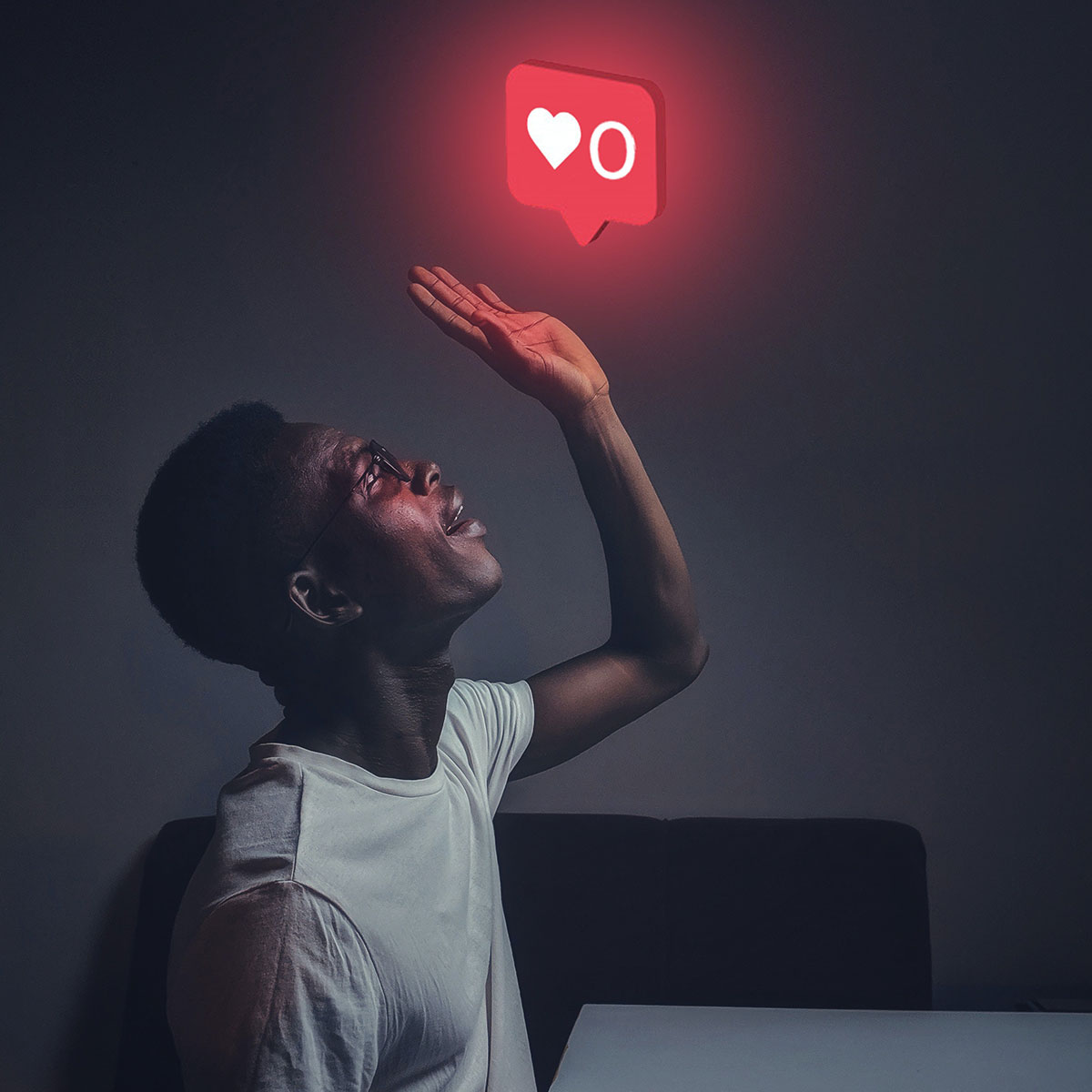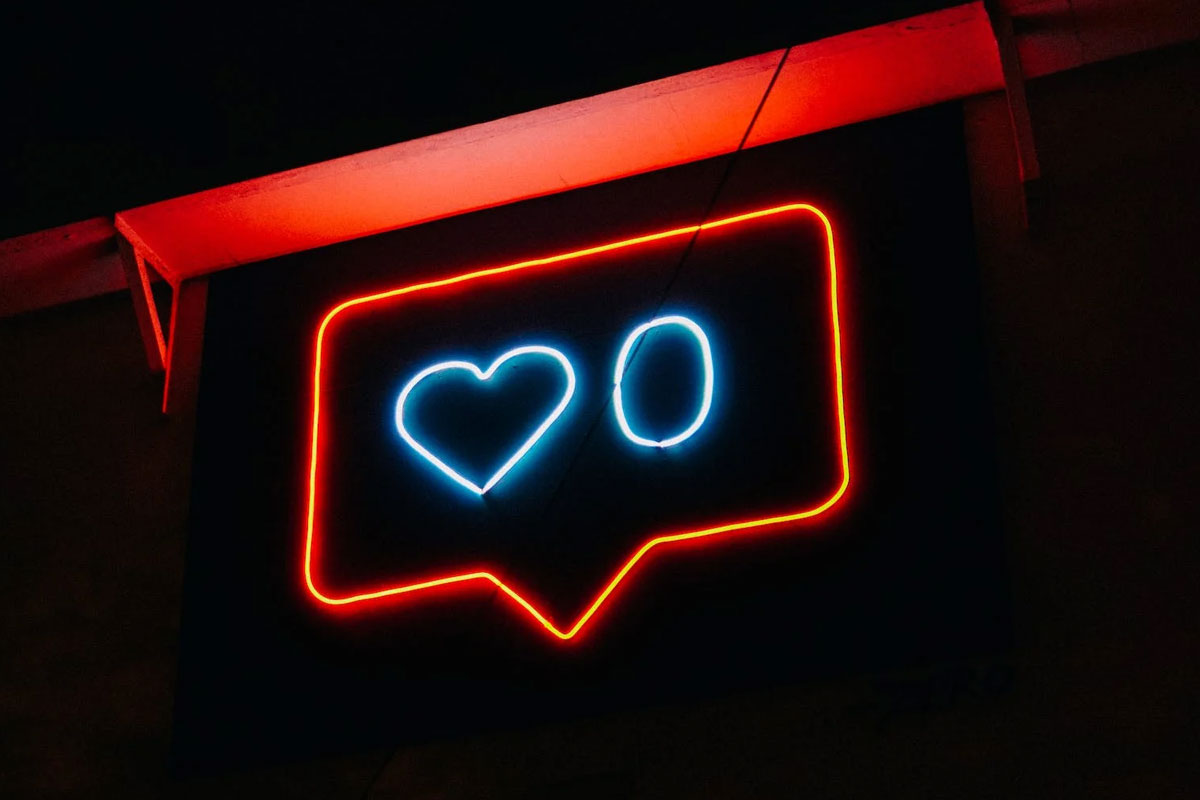
Don’t Fall Behind! Marketing with Social Media gets Harder the Longer You Wait!
In the year 2013, Content Creators, Businesses, and Marketers began using social media platforms like YouTube, Instagram, Twitter, and Facebook to promote their businesses online. For those who stayed consistent and produced content that spoke to their online audiences; amassed thousands – even MILLIONS of followers. But marketing with social media is a lot harder to see the same success online today. Here’s why…
Why Marketing with Social Media is Harder in 2023
- Why marketing with social media is important to your insurance business
- The evolution of marketing with social media over the last decade
- Why marketing with social media is harder in 2023 than in the past
- Strategies to help you market your insurance business on social media in today’s world
Why Marketing with Social Media is Important to Your Insurance Business
Insurance agents are marketing with social media to generate leads in today’s digital age. Online marketing strategies are used to generate leads by increasing brand awareness. If done right, one can reach audiences all over the country – or all over the world! Agents can also reach wider audiences with their website when they’re marketing with social media. Effective SEO (search engine optimization) strategies help online audiences find your website more easily when they are searching online for services like yours. By expanding your business’ presence online, you’re opening up your business to people in places further than just in your local community.
Establishing an online presence through social media also helps legitimize your business and provides you with credibility to online users. Because scammers are on every corner of the internet – and the physical world – nowadays, you must prove to your audience that you are a legitimate business. You must prove that you are a real person and business, and that you are there to help them. By building relationships of trust and rapport with social media, you’re opening your business up to more clients. Clients in today’s world want to support people and businesses that they feel hold an emotional connection with. Emotional connections are established by giving audiences a glimpse into who you are, what you do, and how what you do provides them with value; aka, your personal brand.

The Evolution of Marketing with Social Media Over the Last Decade
QUESTION! Which social media platform was started first? LinkedIn, Myspace, YouTube, or Twitter?
Answer: LinkedIn! LinkedIn was founded in December of 2022, but officially launched on May 5th of 2003 – making it the oldest, most relevant social media sit in today’s digital world. As posted on their website, LinkedIn’s mission is “to connect the world’s professionals to make them more successful and productive. [Their] vision is to create economic opportunity for every member of the global workforce.”
- MySpace: Launched August 1st, 2003.
MySpace was developed by everyone’s first online friend; Tom Anderson. The social media site was a platform targeted towards music artists in order for them to promote their newest music. This made MySpace a very attractive place for youth to explore new music and share information with friends online. MySpace fought hard to rebrand itself to retain users amidst the uprising of Facebook in the year 2009, but was unsuccessful and the company was sold for $35 Million in 2011.
- Facebook: Launched on February 4th, 2004
Developed by Tom’s ex BFF Mark Zuckerberg, Facebook initially started as an online space for Harvard students. But then quickly expanded to other college individuals in the Boston, Massachusetts area. By September of 2006, anyone over the age of 13 with a valid email address could join Facebook to start sharing cat videos and memes. In late 2007, Facebook had close to 100,000 business pages where businesses of all sizes could have a space online to share new products, launches, updates, and communicate with consumers. As early as February of 2011, Facebook had become the world’s largest photo-sharing platform. With 350 Million users of the Facebook App, the numbers accounted for over 33% of Facebook’s overall traffic in October of 2011. By October of 2012, Facebook reached 1 Billion active users.
- YouTube: Launched on February 14th, 2005
The long-form video sharing platform YouTube was developed by 3 friends; Chad Hurley, Steve Chen, and Jared Karim. “YouTube allows users to upload videos, view them, rate them with likes and dislikes, share them, add videos to playlists, report, make comments on videos, and subscribe to other users. The slogan “Broadcast Yourself” used for several years and the reference to user profiles as “Channels” signifies the premise upon which the platform is based, of allowing anyone to operate a personal broadcasting station in resemblance to television with the extension of video on demand.” – Wikipedia
Google purchased YouTube in November of 2006 for $1.65 Billion, where YouTube now operates as one of Google’s subsidiaries. YouTube was one of the first apps made available in the Apple AppStore – for the launch of the iPhone in 2007. (The app did not gain large popularity until the year 2012 when the redesign mimicked the website.) In 2012, YouTube reported that 60 hours of video were uploaded to the platform every minute. By February of 2017, an average of 400 hours of video content was being uploaded to the platform per minute. Then by May of 2019, the number had amassed to 500 hours every minute!
…That’s a lot of cat videos…
- Twitter: Launched on March 21, 2006
Twitter was developed by 4 members; Jack Dorsey, Noah Glass, Biz Stone, and Evan Williams. The site is considered a microblogging platform where users can post and interact with messages known as “tweets”. Users with a registered Twitter account can like, tweet, and retweet tweets. Persons without a registered account can only view public tweets. Twitter began as an online-only web based digital platform, but quickly began allowing SMS tweets with a limit of 140 characters. In 2017 the character limit doubled to 280 characters for text tweets. However, video and audio tweets are still limited to 140 characters.
FUN FACT! The 140 character limit originated from the SMS limit of 160 characters. Twitter handles were capped at 20 characters, which were considered part of the character limit. This allowed users to be able to send tweets via SMS in one message from text to the platform or other users without disruption.
By the year 2012, Twitter had more than 100 million users producing over 340 million tweets a day, with an average of 1.6 billion search queries a day. In the year 2019, Twitter had more than 330 million active monthly users, with a majority of tweets coming from a minority of accounts. Unfortunately, it is estimated that about 15% (48 million) of today’s Twitter accounts are fake! Then in April of 2022, one of the largest business deals ever took place. On October 27th of 2022, Tesla owner Elon Musk finalized his purchase of the Twitter platform and became Twitter CEO for a hefty purchase price of $44 billion dollars. (Yes, it has been a zoo ever since…) Many users – including celebrities and businesses – have left the platform due to an increase in the spread of hate speech and misinformation.

- Pinterest: Launched in March of 2010
Developed by Ben Silberman and Paul Sciarra, the app was originally called Tote. The Tote App originally served as a virtual replacement for paper catalogs; where users could purchase items from all over the internet in one place. Due to the lack of sophistication in electronic payment at the time, the platform struggled. But what Silberman noticed was that users were amassing large collections of items and ideas to share with others. The idea stuck with Silberman and began the work on Pinterest. Pinterest originally started as web-only, but the Pinterest App launched in the Apple App Store in March of 2011. The platform accrued an average of 11 million weekly visitors by December of that year.
In today’s world, Pinterest is used as a visual search e-commerce platform, where users can organize posts known as “pins” into collections known as “boards”. Pins are images that have been linked from a website or uploaded to the platform; while boards are a user’s way to categorize the images they “pin”. Boards and pins can be kept private or shared with other users, making Pinterest the most “drama-free” social media site. Today’s businesses use Pinterest as a means of having a visual representation of aesthetically pleasing products or services, graphics or infographics, home renovation ideas, recipes, and of course – wedding planning ideas & decor. Pinterest is also widely used as a means of digital SEO, by providing backlinks from pins to the user’s website.
- Instagram: Launched on October 6th, 2010
Developed by Kevin Systrom; the first prototype of Instagram was a web-based app called Burbn; due to Kevin Systrom’s love of bourbon and whiskey. Stripping down the app to its photo sharing, commenting, and “liking” features, the word Instagram combines the words Instant and Telegram. Instagram’s primary focus was to feature photos that were captured on mobile devices.
Instagram originally debuted for Apple iOS only; racking up 25,000 downloads in the first day, 100,000 in the first week, and 1 million by mid December of 2010. This came just in time as the iPhone 4 had launched in June of 2010 with improved camera technology for its time. By March of 2012, Instagram had a user base of about 27 Million. This number was strictly composed of Apple iOS users before the app’s launch for Android in April of 2012. In which, the app was downloaded more than 1 million times in its first day. Shortly after the Android app launch, Instagram was purchased for $1 Billion by Facebook in April 2012. The purchase happened right before Instagram’s Initial Public Offering (IPO), only 2 years after the app’s iOS launch.
A rise in the app’s popularity was mostly due to features like filters that could be used on photos or videos. Users could also upload and organize their content with location tags and hashtags. “Instagram users can browse other user’s photos and videos by searching for hashtags and locations. They can also scroll through an aggregation of trending content and interact with other user’s photos and videos by clicking on buttons that allow them to “like” a post or add a text comment to a post. When a user “follows” another user, it means that they are adding that user’s photos and videos to their feed.” -Investopedia.com
The Instagram platform has received numerous amounts of criticism from users, businesses, and influencers due to the changes in the app’s algorithms. As opposed to posts being seen in a user’s feed in chronological order; posts are organized in a user’s feed by the likelihood that the user ‘actually’ wants to see it. Meaning that a user‘s content might not even be seen by the people who follow them. This is the problem that many businesses and social media marketers try to vanquish every day in order to be more visible online.
With TikTok seeing massive amounts of success since the COVID-19 lockdown, Instagram’s parent company Meta answered by adding a Reels feature in late 2021. Reels are video clips under 90 seconds that can have text/sounds/music added as an overlay. As of early spring 2022, Instagram announced that the IG algorithm would be prioritizing Reels as opposed to photos, officially making Instagram a predominantly video-sharing app. But then after amassing more criticism from users, the platform’s management backtracked. Management made a public statement in the spring of 2023 saying that they would remain a primarily photo-sharing platform.
- TikTok: Launched in September 2016 by ByteDance in Beijing, China.
TikTok originally gained popularity under the name Musical.ly (Music-LEE) when ByteDance spent nearly $1 Billion to acquire the startup video platform. The platform was based in Shanghai, with an office in Santa Monica, CA. Musical.ly started in August of 2014 as a social media platform where users could lip-sync to short sounds; including music and comedy skits. TikTok’s parent company merged with Musical.ly in August of 2018, keeping the TikTok name while also keeping the existing user accounts of Musical.ly in order to create a larger video community.
In late 2018, TikTok was available in more than 150 markets and 75 languages; with more than 104 million downloads on Apple’s App Store. By October of 2018, TikTok had become the most downloaded app (via iOS) in the U.S. Then by February of 2018, TikTok hit 1 billion global downloads.
The TikTok app gained a lot of praise due to its targeted algorithm and content organization. Users view content under the “For You” page, which is a feed of videos recommended to users based on their activity on the app. Feeds are generated by TikTok AI that assesses the content that a user “likes”, interacts with, or searches for. Users can also view the feeds of accounts they follow under the “following” page. TikTok also has additional features like “react” (stitch) and “duet” where users can display their reactions to videos, or duet with the original video in a new side-by-side video showing the user’s reaction to the original video.
Perhaps one of the most commonly used features in the TikTok app is the ability to respond to comments with a video. One of the newest features to the app was made in 2020 which was a “virtual items” or “small gestures” feature. With the addition of this feature, many beauty brands flocked to the platform to capitalize on this ‘social gifting’ feature. The app also features a “family safe mode” which gives parents more control over their children’s digital well-being; giving parents the option to restrict content and screen time management.
Although TikTok was already seeing massive amounts of success prior to the COVID-19 lockdown; the largest boom in users was between March and August of 2020. By July of 2020, the app reported close to 800 million monthly active users worldwide, reaching 1 billion users by September of 2021. TikTok has received numerous criticisms from governments globally regarding; privacy concerns, impacts on mental health, and cyberbullying. In August of 2020, then President Donald Trump threatened to ban TikTok in the US by September 15th if the company did not get bought out by an American company such as Microsoft. Such attempts have since failed.
TikTok continues to have controversy surrounding it; including spread of misinformation, dangerous acts, and some suspicious e-commerce transactions. Although the app continues to buckle-down on its community guidelines by taking down any inappropriate content, concerns among parents and lawmakers remain. Today, TikTok is still gaining popularity, especially in the Gen Z age bracket. But as popularity grows amongst the younger generations; so do the communities of older generations. Everyone just can’t seem to get enough of these videos that last anywhere from 3 seconds to 10 minutes.

Why Marketing with Social Media is Harder in 2023 Than in the Past
Growing a platform for marketing with social media is a lot harder today than it was in earlier years due to a multitude of factors. Some of these factors include;
- Platform oversaturation – too many people all trying to do the same thing; make money.
- Platform monetization – it’s now harder to grow a social media account due to the growth limitations put in place via algorithms. The limitations are because of monetization. Because users can make money from brands and creator funds, social media apps are becoming increasingly harder to grow on without effective content.
- Algorithms – love ’em or hate ’em, you have to please the algorithm with high quality content in order for it to be seen.
- Controversy – between data breaches & privacy terms, community guidelines, spread of misinformation, cyberbullying, hate speech, and more; controversy within social media apps can make it harder to grow and be seen by your niche market of consumers.
People who started out on social media platforms before the biggest booms of users are the users who were leading (and still are leading) the big trends. While they’re leading the trends, they’re still continuing to grow. Unfortunately, some users feel the need to do something big and bad in order to get noticed. Perhaps one of the biggest reasons why we see schools and other public places being vandalized – it’s because we as people can’t help but watch the dumpster fires as they’re going up in flames. But we should remember that how we ‘come up’ is how we’re remembered. And being remembered for conducting crimes for views is the fast track to handcuffs – and NOT business growth.
Seven Strategies to Help You Market Your Insurance Business in Today’s World
Branding with your personal brand. Having a consistent message in who you are, what you do, and how what you do brings value and serves the consumer.
Niche marketing. Making yourself and your business more appealing to a smaller group of targeted individuals who fit into a niche market of consumers who are most likely to purchase from you. Create content that speaks to them and their needs or pain points and provides context to what your brand can do to help them.
High quality content. Content that is blurry, out of focus, not in frame, or simply of poor quality will not perform well. You have to think about what is going to catch the eye of your niche market of customers; without being click-bait.
Content diversification. Generally speaking as a rule of thumb; out of every 6 social media posts, 3 should be educational, 2 should be about your brand or company culture, and 1 should be “salesy” or promotional.
Posting strategy. Having a good posting strategy is KEY! Posting at optimal times during the day when your audience is most active on the app will bring you higher engagement. Engagement is when any user interacts with your post. Likes, comments, shares, etc. are all considered engagement. The more engagement your post has, the more that the algorithm sees this content as important for other people to see; therefore increasing your post reach.
Tagging strategy. Using location tags and hashtags are SO important in order for your content to reach a larger audience; even if you’re only tagging the city where your business operates out of. When users are searching for content by location or topic, your content will have a broader reach because of the location and hashtags you used.
If you’re not using location tags or hashtags; you’re not going to increase your reach. You’re just posting for your small pool of followers to see. (And that’s if the algorithm even decides to show your content to the people who already follow you!)
Utilize video content in your posting strategy. There are a ton of benefits to using video content in your online strategy. Video retains viewership longer than pictures or text, it’s more engaging and interactive, it helps drive conversion, and more. Video content is most likely to get higher engagement; which now we know helps with reach in the algorithm.
Are You an Independent Insurance Agent Who’s Marketing with Social Media?
Have you been utilizing any of these social media marketing strategies to grow your business? Share your online success with us on social media and don’t forget to follow us on Facebook, LinkedIn, TikTok, and YouTube!
SUBSCRIBE TO OUR E-MAIL LIST
to STAY UPDATED!
Embark on the path to success alongside over 3,000 agents. Enroll in our email list now and ensure you stay at the forefront, receiving top-notch insurance tips, lead sources, carrier highlights, industry news, and much more!







